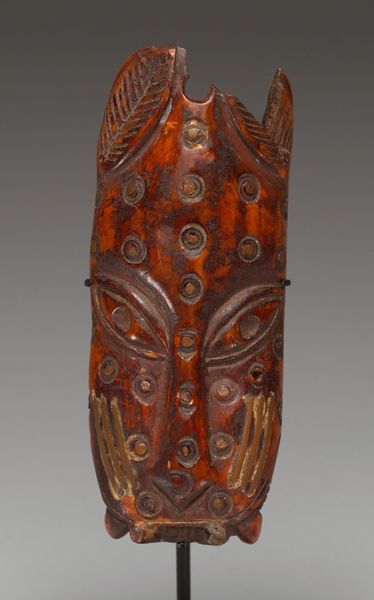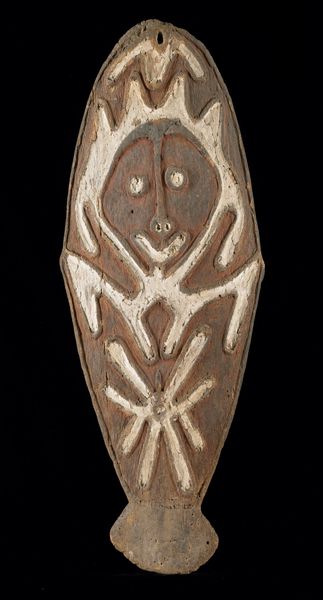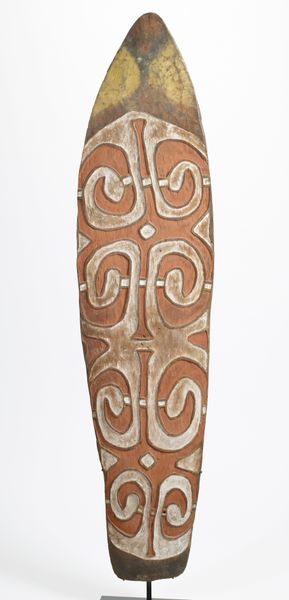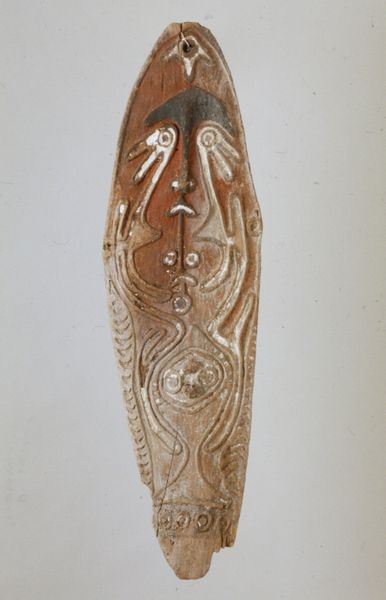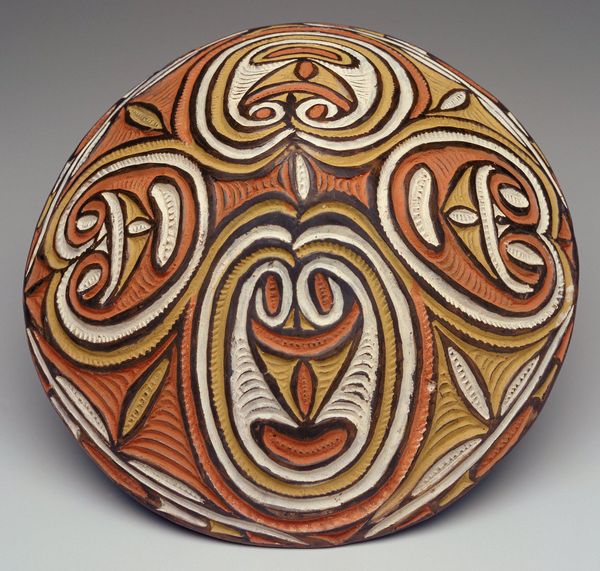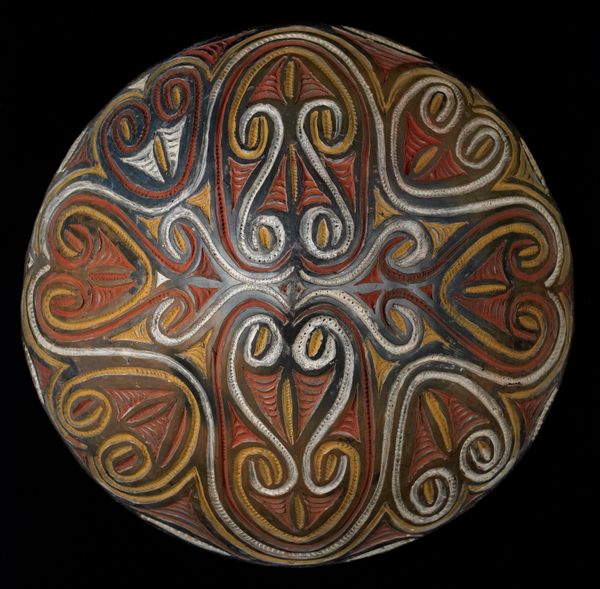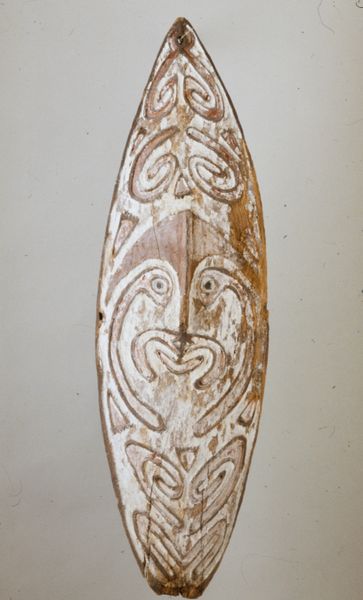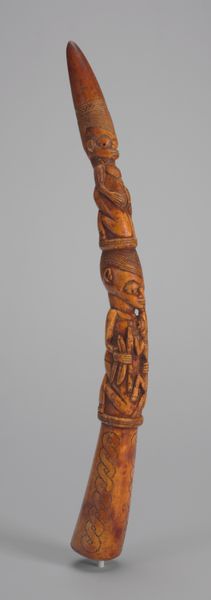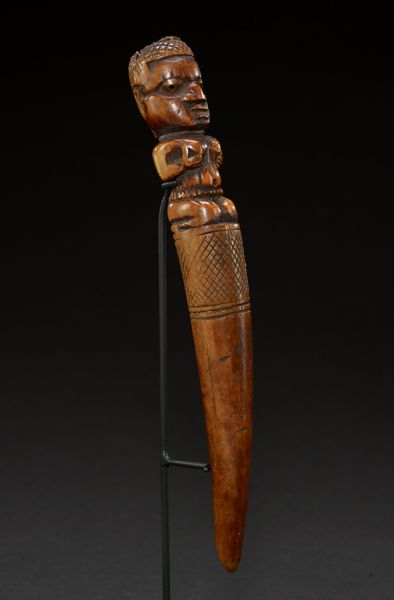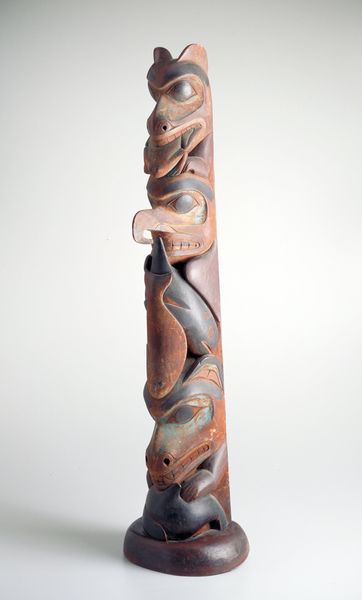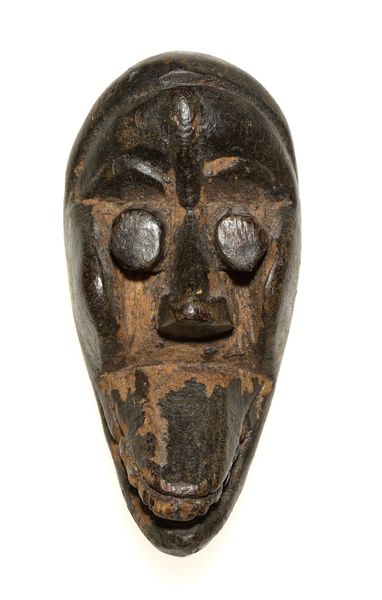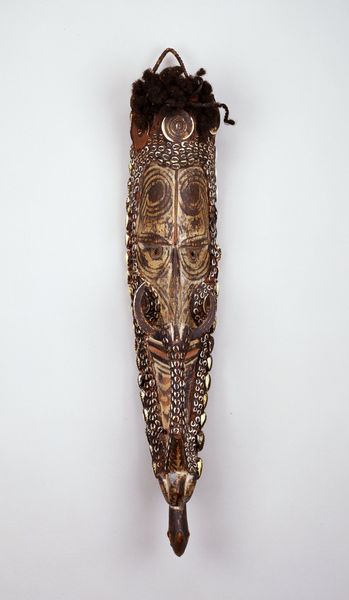
carving, relief, sculpture, wood
#
carving
#
sculpture
#
relief
#
geometric
#
sculpture
#
wood
Dimensions: 41 1/2 x 13 in. (105.41 x 33.02 cm)
Copyright: Public Domain
Curator: Here we have a Gope Board, dating to around the 20th century, now housed at the Minneapolis Institute of Art. These boards are traditionally created by the people of the Papuan Gulf, and this one is crafted from wood, featuring intricate carvings and relief work. Editor: Whoa, I get an immediate, primal jolt from it. The stark geometric shapes and that symmetrical face in the center—it's mesmerizing and kind of…intimidating, like some powerful spirit staring right through you. I love the limited color palette, the earthy reds, whites and blacks; the shapes appear to float. What can you tell me about its purpose? Curator: Gope boards served multiple functions. They were often kept in men’s communal houses and were believed to embody and channel the spirits of ancestors, especially those lost at sea. They acted as intermediaries between the living and the dead. The specific geometric patterns, those lovely, rhythmic chevrons, and the faces are thought to hold particular significance tied to clan identity and mythical narratives. Editor: So it's like a family crest, but infused with spiritual energy, and honoring their waterlogged ancestors? Makes that intensity I felt earlier even more interesting. Do we know how the boards are constructed, what that process looks like? Curator: Absolutely. The boards are typically carved from mangrove wood, chosen for its durability. The process of carving and painting would involve ritual purification and invocations. Traditional pigments, derived from natural materials, would be applied, creating a visual language deeply intertwined with the community's worldview. It’s important to acknowledge that colonial dynamics impacted Papuan artistic expression, including, and particularly during, the time period of its making. Editor: Wow, picturing that creation ritual— it sounds powerful. Knowing the intention behind the geometric and face carvings adds another layer; this isn’t just a carving, it's a vessel of stories and a bridge across generations. I'll admit, my perspective coming into this, the "primal" vibe, might have overlooked those crucial historical layers. Thanks for bringing that richness. Curator: It's a privilege to share a perspective which foregrounds the intertwined cultural significance of such artwork. Approaching Indigenous art demands an awareness of colonial impact and the need to engage with narratives from the communities themselves. Editor: Well, this visit definitely turned my initial, instinctive response into something far more layered. Next time I will come more prepared to look into all angles of the works. Curator: Indeed, these encounters enrich us with insights of history.
Comments
No comments
Be the first to comment and join the conversation on the ultimate creative platform.
